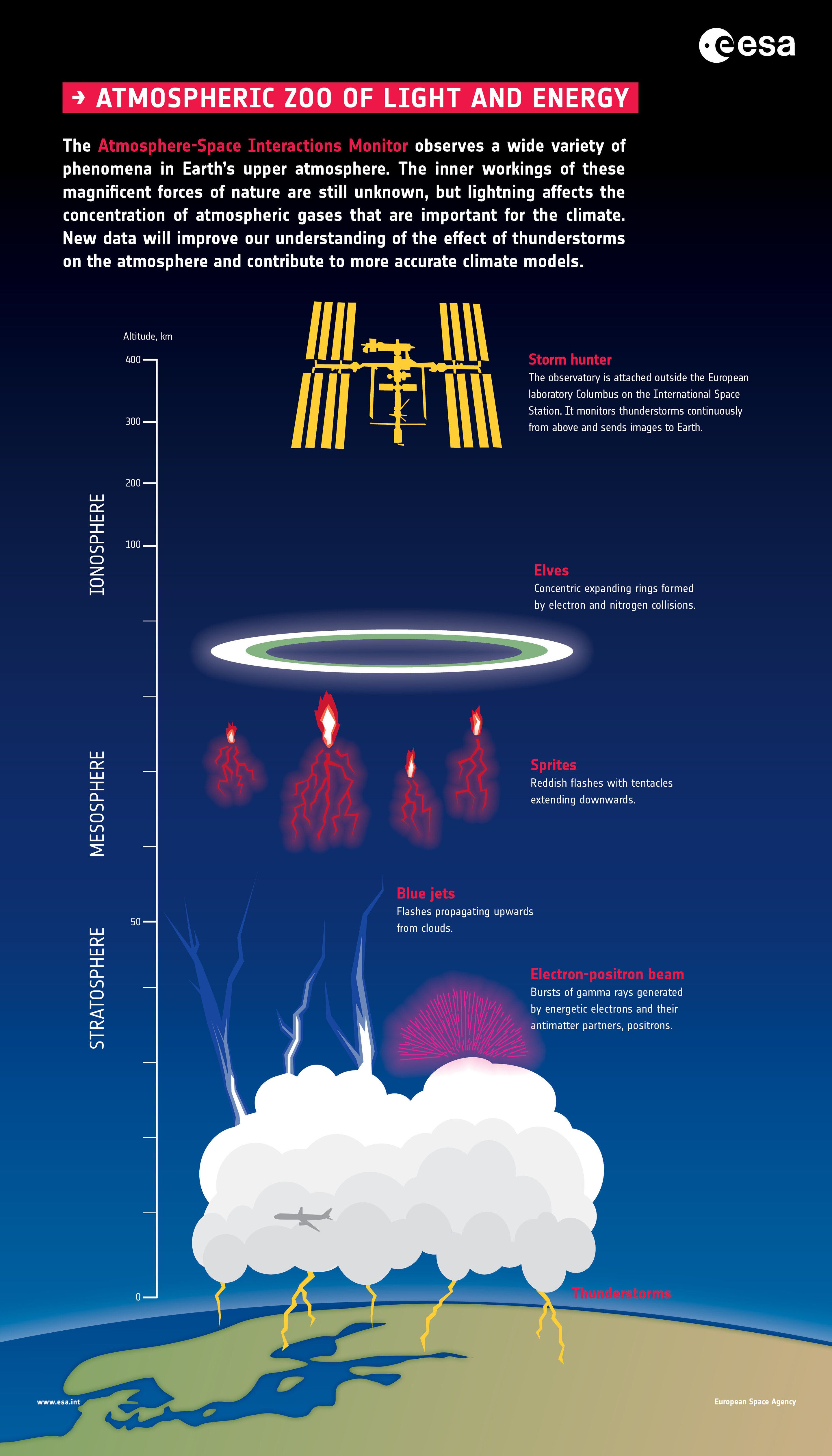- The International Space Station is in a unique position to help scientists on Earth understand some of the more mysterious aspects of thunderstorms.
- An observatory on the ISS is providing researchers with insights into curious storm phenomenon only seen from space.
- Bizarre features that have names like “blue jets” and “elves” are being studied using images and data from the ISS.
Thunderstorms on Earth are, in general, pretty cool. Assuming they don’t bring with them seriously damaging winds or a tornado or something, a thunderstorm can be an enjoyable atmospheric event. However, understanding the inner workings of large storms is something that researchers have struggled with for some time, especially when it comes to what happens way up in the region where the storm ends and the rest of the atmosphere begins.
Now, new research from the International Space Station is helping scientists to decode some of the more curious storm phenomena, including things called “blue jets” and “elves.” It might sound like sci-fi, but it’s very real and actually really cool.
Scientists from the European Space Agency have been using observations from ASIM — the Atmospheric-Space Interactions Monitor, which is mounted to the space station — to study storm features that are only visible from space. Their research was published in Nature.
So what exactly are these “blue jets,” “elves,” and “sprites” that weather researchers were so eager to learn more about? Well, it’s a little bit complicated, but they all seem to be related to one another, and it’s all about the discharge of stored energy.
“Blue jets are lightning-like, atmospheric electric discharges of several hundred millisecond duration that fan into cones as they propagate from the top of thunderclouds into the stratosphere,” the researchers explain. “They are thought to initiate in an electric breakdown between the positively charged upper region of a cloud and a layer of negative charge at the cloud boundary and in the air above. The breakdown forms a leader that transitions into streamers when propagating upwards.”

What we see with the naked eye (if we happen to be in space looking down at Earth) is a bright blue bolt firing upwards into the atmosphere, sort of like a reverse lighting bolt. Elves, on the other hand, are harder to detect with the naked eye and are also partially visible only to ultraviolet-sensing equipment. They’re described as “rapidly expanding rings” of both optical and UV emissions. Elves sometimes accompany blue jets.
Sprites, on the other hand, are red to our eyes and they appear as bolts of energy flowing downward toward the storm from above. This area of the atmosphere is known as the mesosphere, and it’s below the ionosphere where the elves were observed.
It’s all pretty interesting, and as more data and observations are compiled we can look forward to learning more and more about these strange and awesome features of our Earthly weather.








